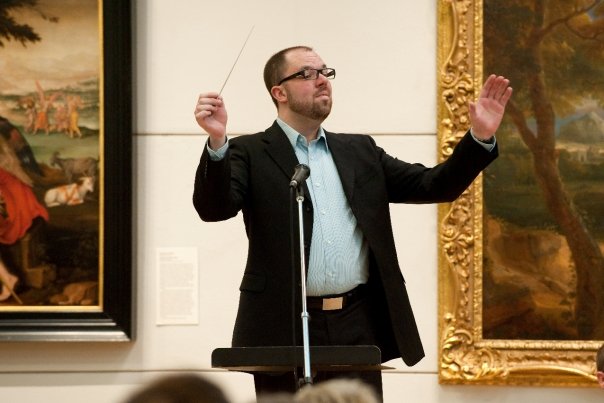The social networking site Facebook recently introduced over 50 options for users to express their gender. A post on its Diversity Page reads, “When you come to Facebook to connect with the people, causes, and organizations you care about, we want you to feel comfortable being your true, authentic self. An important part of this is the expression of gender, especially when it extends beyond the definitions of just ‘male’ or ‘female’.” The struggle for gender equality has been a long and continuous battle, one still actively being waged today. Until recently this struggle largely focused on equality between men and women. Facebook’s notorious change signals a change in the gender conversation; the battle for equality appears to be broadening and including recognition of gender identities beyond the binary definitions of male and female.
The world of musicians is an interesting microcosm from which to observe and study gender bias. As in many fields, professional musicians were largely male until the middle of the 20th century. Developments in this regard led to the near universal use of blind auditions in the orchestral world. This battle presently continues in the world of professional musicians, as the press recently highlighted by the continued overwhelming dominance of male orchestral conductors. Although progress has been and still continues to be made, the journey towards gender equality among musicians is still long.
Nowhere is this truer than in the world of singers. They are, of course, more tied to binary gender definitions for obvious reasons: the male voice and the female voice typically sound distinctly different. The double-edged sword of the vocal world is that a lifetime of singing is dependent upon the uniqueness of one’s voice. However, the quality and range of a voice, and often one’s gender, limits its performance possibilities, particularly in traditional classical music. This gender division continues into the choral world. Starting in puberty, choral singers are placed in single-gendered choirs based on gender binarism. We name our choirs using gendered language, basing repertoire choices for single-gendered choirs largely on stereotypical norms. A quick search for the most popular men’s chorus repertoire (beyond the GALA world, obviously) results in a bevy of sea shanties, cowboy songs, war anthems, and overwhelmingly heteronormative text settings. Contrarily, repertoire for women’s choruses often proves more reflective, with popular text settings including flowers, love, and more lyrical writing. Unfortunately, the stereotype that, “Women’s choruses sing settings of Emily Dickenson and men’s choruses sing Walt Whitman” is far too close to the truth.
The choral world broadly uses gendered language in reference to sections in mixed chorus environments. Tenors and basses are referred to as “men” while sopranos and altos as “women”, regardless of the actual gender makeup of the sections. GALA Choruses have led the choral world in this regard, as its statement on gender shows. I came to work with a GALA choir after teaching and directing choirs for many years. Prior to that time I actively participated in using such inappropriate gendered language, much to the chagrin of the rare unchanged male voice singing in the alto section and/or the lower female voice singing in the tenor section. The experience with a GALA choir developed my understanding of gendered terminology and challenges me to abandon such language in mixed chorus environments. In my current role as a collegiate choral conductor, I work to impart this change in terminology to the conductors and future teachers I work with. Though slow, progress is being made, and my students have reported to me that hearing gendered language in the choral environment makes them uncomfortable. Heightened awareness is the first step.
Gendered terminology stretches beyond the misuse in mixed choirs. The biggest struggle I face in this regard is the pervasive classroom use of the term “guys” in the lexicon of developing, pre-service teachers. Often the use of “guys” masks a misguided attempt to relate with students, an attempt to appear “hip” or to compensate for ineffective teaching. Although I believe this terminology should never be used in the classroom, I find it especially troubling when dealing with our youngest students who are most vulnerable to such unintended dismissal. This issue is complicated by the term’s overuse in the popular culture (during a recent watching of NBC’s “The Sing Off” I counted this term used 19 times in one judge’s critique of a mixed a cappella choir.)
Despite the widespread problems that still exist in the use of gendered terminology during choral rehearsals, things are getting better. Perhaps the next question for our community to consider is how the choral world should be influenced in a post-binary gendered environment. Are these environments too limiting for our singers? Are we nearing the end of single-gendered choirs? As a collegiate choral teacher who conducts all single-gendered choirs, I believe this is worthy of consideration. If people feel called to identify themselves by as many as 50 gender distinctions, as Facebook’s aforementioned change shows, is it fair to limit their choral choices? Are we excluding singers from being a part of our ensembles because of our predominantly binary distinctions? Are people of non-binary gender distinctions only welcome in choirs designed for trans-voices?
If the choral world needs change to become a more inclusive place for non-binary gender identifications, the GALA community is the perfect place for the transformation to begin. Many singers, conductors, pianists, and audience members have been influenced by GALA’s commitment to non-gendered language in the choral rehearsal and have taken these lessons into other communities, stretching beyond the choral field. GALA choirs can, and indeed should, set the example for how we move forward in welcoming all people, regardless of gender distinction or classification.
- Lessons on Gender and the Choral Rehearsal - February 28, 2014




